How to Use Paint Thickness Gauges for Better Automotive Detailing
Posted by richard hale at
Automotive detailing has evolved into a meticulous and highly skilled art form over the years. Whether you're a professional detailer or a passionate car enthusiast, achieving a flawless finish on your vehicle requires more than just high-quality products and techniques. Understanding the condition of the car's paint is crucial, and one tool that can greatly assist in this endeavor is the paint thickness gauge. In this article, we will explore how to use paint thickness gauges effectively to enhance your automotive detailing results.
What Is a Paint Thickness Gauge?
A paint thickness gauge, often referred to as a coating thickness gauge or a paint meter, is a handheld device used to measure the thickness of paint or other coatings on a car's surface. It is a crucial tool for assessing the condition of the paint and determining whether it requires correction or refinishing. Paint thickness gauges work based on the principle of electromagnetic induction or eddy current technology, which measures the thickness of the coating by analyzing the response of the paint to a magnetic field.
Why Use a Paint Thickness Gauge?
-
Accurate Assessment: Paint thickness gauges provide precise measurements of the paint or coating thickness, allowing you to identify any unevenness or inconsistencies in the surface.
-
Determining Repainting Needs: They help you determine whether a vehicle has been repainted or undergone any previous bodywork, which is essential for transparency in the buying and selling process.
-
Detailing Strategy: By knowing the paint thickness, you can tailor your detailing approach. Thin paint may require gentler treatment, while thicker paint can withstand more aggressive correction methods.
-
Quality Control: For professional detailers, paint thickness gauges aid in quality control, ensuring that the desired results are consistently achieved.
Using a Paint Thickness Gauge
Here's a step-by-step guide on how to use a paint thickness gauge effectively:
- Choose the Right Gauge:
There are various types of paint thickness gauges available, including electronic and mechanical versions. Select a gauge that suits your needs and budget. Electronic gauges are generally more accurate and user-friendly.
- Prepare the Surface:
Ensure the vehicle's surface is clean and dry. Remove any contaminants or debris that could interfere with accurate measurements.
- Calibration:
Before using the gauge, it's essential to calibrate it according to the manufacturer's instructions. This ensures that the readings are accurate.
- Take Measurements:
Place the gauge probe flat against the surface you want to measure. Keep the gauge perpendicular to the surface and press the trigger button. The gauge will emit a signal and provide a reading in micrometers (µm) or mils (1 mil = 25.4 µm). Take multiple readings in different areas to ensure consistency.
- Interpret the Results:
Once you have gathered the measurements, assess the paint thickness. Here are some general guidelines:
- Thin Paint (less than 100 µm): Handle with care. Avoid aggressive correction methods, as there's a risk of removing too much paint.
- Average Paint (100-200 µm): Standard detailing procedures can be applied.
- Thick Paint (more than 200 µm): Can withstand more aggressive correction and may require it for optimal results.
- Record the Data:
It's a good practice to record your measurements, either digitally or on paper, for future reference. This helps you track changes in the paint thickness over time.
- Make Informed Decisions:
Based on your measurements, tailor your detailing process. For instance, if the paint is thin, opt for milder polishing compounds, while thicker paint may benefit from a more aggressive approach.
Measuring Paint Thickness And Clear Coats
To ensure consumer value and maintain profitability, there are two key considerations when justifying the equipment and processes used in the detailing process. Any additional cost must result in improvements in either efficiency or effectiveness. While it could be argued that a detailer's ability to quickly measure paint thickness using a paint thickness gauge is an efficiency benefit, the primary advantage lies in the increased effectiveness.
When identifying the need for polishing (sanding and buffing), it is crucial to assess the paint in the surrounding areas. Factory paint jobs typically measure between 4-7 mils (100-180 microns). Thinner readings suggest that the clear coat has been mostly removed or, in the case of single-stage systems, that the primer is on the verge of becoming visible.
With that said, thicker readings often indicate that repainting has taken place. When repainting is detected, the operator faces a challenging task of assessing the suitability (thickness) of the top layer of paint for buffing. Regardless of the operator's caution, buffing or polishing on thin coatings poses a risk of damaging the vehicle's paint. When dealing with thin coatings or unknown paint layer thickness, resorting to an alternative system such as hand polishing may be the only safe choice available.
Once the paint system used on a vehicle is identified, it is crucial to determine the actual paint thickness. Even for experienced detailers, visually inspecting the paint thickness, especially the clear coat, can be challenging. As thinner and more scratch-resistant clear coats like nanotechnology become increasingly common, the use of a high-resolution electronic paint thickness gauge becomes essential. This tool allows for accurate measurement of the paint thickness being removed while achieving meticulous results.
To prevent UV damage to the underlying paint layers, auto manufacturers typically suggest removing no more than 0.3 mils (8 microns) of clear coat. In the event of a worst-case scenario with a single stage paint process, buffing down to the primer could potentially lead to an expensive visit to the paint booth.
It is important to note that paint damage may not be immediately visible. Removing too much topcoat can lead to premature failures, such as fading or delamination. These failures can result in lawsuits, dissatisfied customers, and damage to reputation. To mitigate these risks, it is recommended to monitor and minimize the amount of topcoat removed. This can be achieved through quick and easy measurements using an electronic paint gauge. By doing so, you can ensure the longevity of the paint and maintain a high level of quality.
Closing Thoughts And The FS688 Paint Meter Recommendation
Using a paint thickness gauge is a valuable tool in the arsenal of any automotive detailer or car enthusiast looking to achieve the best possible results. It provides crucial information about the condition of a vehicle's paint, allowing you to make informed decisions and apply appropriate detailing techniques.
By following the steps outlined in this article, you can use paint thickness gauges effectively and take your automotive detailing skills to the next level, ultimately delivering a flawless finish that both you and your customers will admire.
For those of you that are looking for a paint thickness gauge you can trust, one of the Best Selling paint meters is the FS688.
With over 15000 paint meters sold and counting, you won’t find another paint thickness meter doing as much volume. Check out the FS688 Paint Meter for yourself here.



